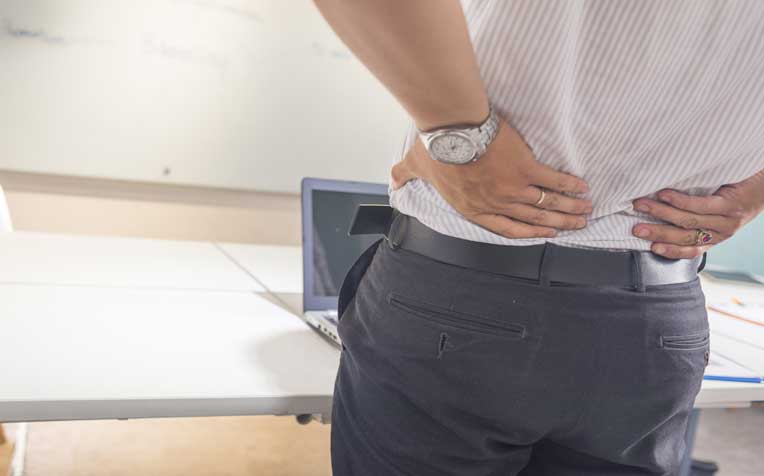
Take regular breaks from the computer and do some stretching exercises.
Sitting at your computer for hours at a stretch may cause more than just a backache. It can accelerate the normal wear and tear of your spine and cause spinal problems such as cervical spondylosis and lumbar spondylosis at an early age.
Spondylosis is a degenerative disc condition, typically common among people aged 40 and above. However, patients are getting younger. Of the 130,000 outpatient visits at SGH in 2011, over one-third had sought treatment for spinal problems, many of them below the age of 40.
"I am seeing more people in their 20s and 30s with symptoms of cervical spondylosis and lumbar spondylosis such as neck pain and lower back pain. The pain is usually aggravated by prolonged sitting in the office, typically working on the computer,"says Associate Professor Tan Seang Beng, Senior Consultant and Director, Spine Service, Department of Orthopaedic Surgery, Singapore General Hospital (SGH), a member of the SingHealth group.
In serious cases, these spinal problems can lead to numbness and weakness in the hands, arms and legs. But with diligent spinal care and early treatment, you can prevent spinal problems from worsening, adds A/Prof Tan.
Causes of spondylosis
Spondylosis is a condition where the joints and cushions (intervertebral discs) that form the backbone wear out, generally due to ageing. It occurs mainly in the neck (cervical spondylosis) or lower back (lumbar spondylosis).
When the cushions and joints of the spine are worn out, the spine loses flexibility and becomes stiffer. Bending of the spine for long periods of time (which typically happens when sitting for prolonged periods, especially in a slouched position) puts increased pressure on these cushions and joints which tend to become stuck and stiff.
When getting up from the chair, the spine suddenly has to straighten, and the sudden movement causes pain and occasionally, injury. Bone spurs grow from the joints as a result of constant friction, wear and tear, and occasionally become large enough to cause pinching of nerves.
Symptoms of spondylosis
The main symptoms of cervical spondylosis or lumbar spondylosis include the following:
- Stiff and painful neck
- Lower back pain and tenderness
- Stiffness and difficulty moving the back
- Tingling sensations in one or both arms, hands, legs or feet
- Numbness and weakness in one or both arms, hands, legs or feet
- In severe cases of nerve pinching, difficulty in walking, unbalanced or unsteady gait with a tendency to fall especially when climbing stairs
- Poor bladder control
- Headaches, and occasionally giddiness
Read on to learn how spondylosis is treated and tips for spinal care.
Ref. T12
Contributed by














 Get it on Google Play
Get it on Google Play